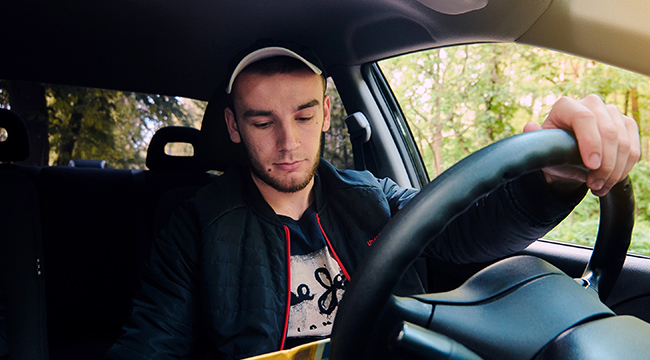
If you’re in a strange city, Waze is incredibly useful — unless you’re a police officer looking to run a speed trap. The app uses crowdsourcing to pull real-time traffic data in order to more efficiently route cars through cities so that, instead of everybody clogging the freeway, drivers can be more evenly distributed and traffic is less frustrating. At least, that’s how it’s supposed to work. In Los Angeles’ Echo Park, Waze users are learning the hard way that a robot can only understand so much about driving.
The LA Times has an article that’s both hilarious and more than a little concerning about LA’s notorious Baxter Street, one of the steepest streets in America with a 32-degree grade. That’s a problem thanks to gravity; watch this video of pro skater Don “The Nuge” Nguyen go straight down Baxter, and then imagine starting at the top at 30 or so miles an hour with the momentum of an SUV behind you:
The problem is that Baxter Street’s absurdly steep grade isn’t on most maps, and that it’s close by one of LA’s many, many traffic bottlenecks:
But the disruption has been particularly dramatic on Baxter Street, which has become a rush-hour thoroughfare for drivers trying to avoid jams on nearby Glendale Boulevard… The problem is that Baxter, with its Himalayan double dip between Allessandro Street and Echo Park Avenue, is not a normal street, and it was never meant to be a thoroughfare. The Times has reported that Baxter ranks as the third-steepest street in Los Angeles with a 32% grade, behind 28th Street in San Pedro (33.3%) and Eldred Street in Mount Washington (33%).
Residents on the street have, meanwhile, found themselves at incredible risk, especially when it rains — which has lead to hydroplaning cars spinning out and crashing into gardens. They’ve also witnessed absurdity straight out of a movie:
I live two blocks from there and it's so bad. Exhibit A below. pic.twitter.com/fS8mSJr7M5
— Alisa Loves Bollywood & Asian Dramas (@BollywoodNewbie) April 4, 2018
At root, though, the fundamental problem here is that Waze’s algorithm not only has no idea this is a problem, it has no way to figure that out. Waze uses Google Maps to determine directions, and if you look at Baxter online, it looks like a perfectly flat street. Baxter Street is what engineers call an “edge case,” an extremely unusual scenario the vast majority of users are unlikely to run into, so they didn’t plan for it. And now that they’re faced with it, mostly they shrug.
It’d be funny except for, like we said, the residents of Baxter worry a vehicle might go flying into their yard every time it rains. It underscores one of the fundamental problems with how we approach technologies like Waze. Sure, it generally works, but there’s a massive gap between the abstract data that algorithms work with, and how they apply it, and the real world we have to live in and navigate. Most of the time, falling into that gap means ridiculous website ads and weird friend suggestions on Facebook. But as the folks on Baxter Street can attest, that gap is big enough to potentially be dangerous.
(via The Los Angeles Times)
